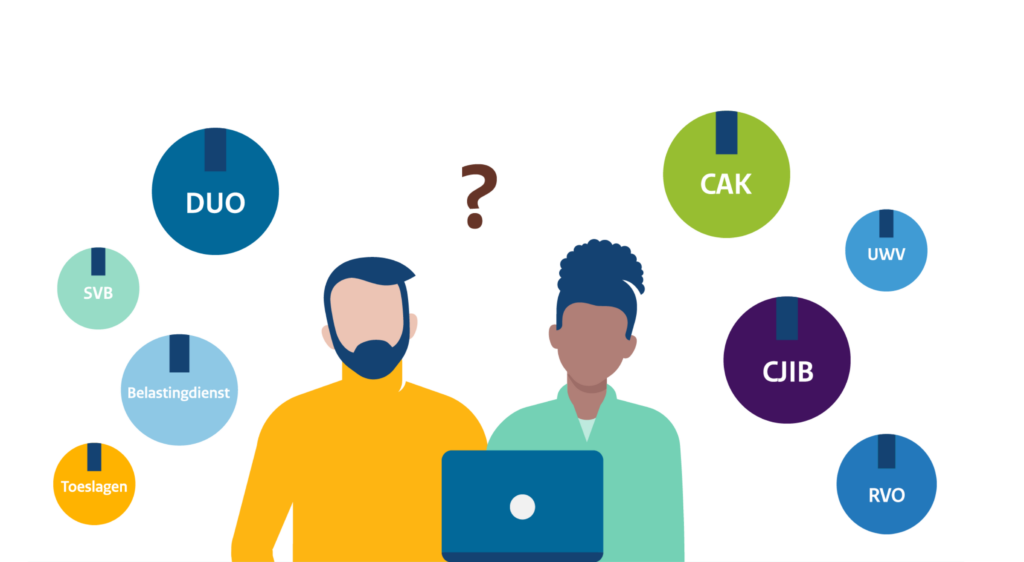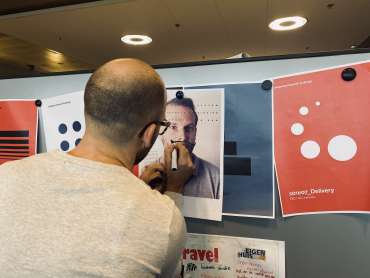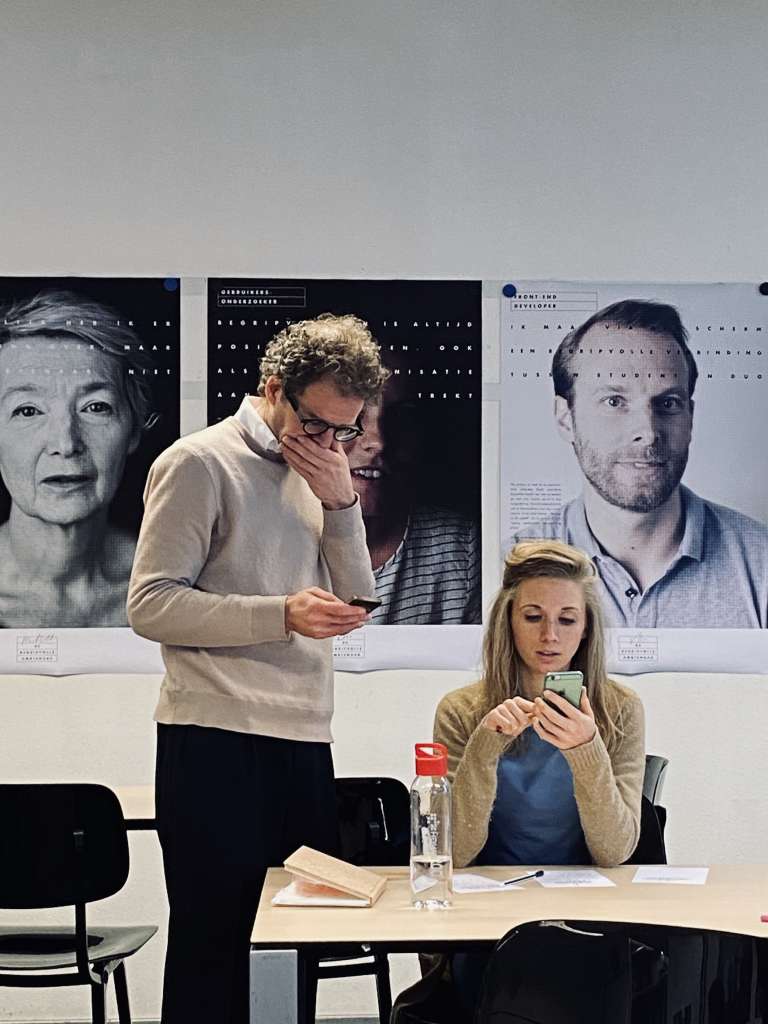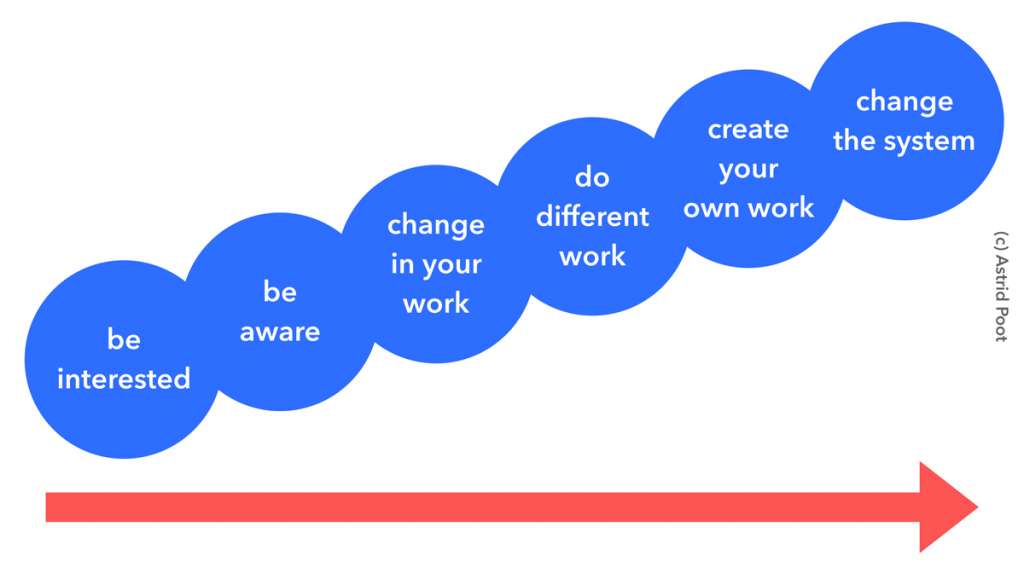Can a design-based approach lead to better governance?
During the event From Steerless to Steering Power, organized by PONT, Kustaw Bessems talked about his new book, Stuurloos (Steerless). The room was full of people interested in the overlap between design and government. Kustaw mentioned 4 patterns that are difficult in government, and for each pattern a designer talked about its own practice in a public context and how such a pattern can be broken.
For example, one pattern was that the government is cut up into different specialties working hard in their own square inches. As a result, there is often no eye for the whole and problems are tackled from those individual boxes. That just does not lead to good solutions to the large social problems.
Een belangrijk principe van mensgericht ontwerpen is juist ‘uitgaan van de gehele ervaring van de gebruiker’ en van daaruit diensten en beleid ontwerpen. Ik vertelde hoe in de casus die ik onderzoek, het programma Clustering Rijksincasso, dit principe toegepast wordt en tot welke nieuwe diensten dit leidt.
If you want to follow my research, subscribe to my monthly newsletter.

A clear gap
“How can design-based approaches lead to better governance? Together with the audience, we discussed what it takes to “make it work” and what ingredients are already in place within government. At the same time, we also saw a clear gap.
On the train back I was thinking about that a bit more. Not alone, because with some design friends in government who were also there, I happily continued to text about it.
Indeed, I also see a gap. Fortunately, because it forms the basis for my doctoral research. I see two causes.
Rationality clashes with creativity
First, government practice is indeed unruly for designers. There is a hierarchy in public administration in which feedback from citizens, as users of services, must compete with democratically decided policy adjustments. This leads to a rather rational and technocratic approach to making policies and services and is at odds with the empathetic and creative nature of a design approach. I also write this in my first research publication of my PhD.
As a result, design is often seen as an exception: a creative project, just for the fringes of the service, or at worst – but now I’m being very cynical – as a fun team-building activity. Many designers working in or for government organizations will recognize this. It sometimes feels like working against the grain.
Naive about public traditions
The second cause is found if you look at the matter from the other side. The design approach, as taught at many design universities and art schools, takes no account, or at least far too little, of essential administrative traditions such as democracy and the rule of law.
Designers still too often see themselves as visionaries and even among fellow designers in the Netherlands I regularly hear comments about ‘those civil servants’ and ‘that government’. I always feel some cringe then because it is precisely designers who need a deep understanding of these traditions to be able to offer their qualities to that government. If you want to do something as a designer in the government, and you don’t know what the General Administrative Law Act is, then you’re basically finished, I think.
You probably understand how happy I was when last year, during a guest lecture for first-year Industrial Design students in Delft, a group looked at the Student Finance Act for their group assignment on DUO’s scholarship check.
Want a crash course in rule-of-law traditions? Then be sure to read the first chapters of Kustaw’s book Stuurloos.
Even more so
We actually do the government a disservice by pretending that the design approach is new and that it needs to learn it. Designing is its core business and it has been doing it for years. Government continuously creates strategies, policies and services to create a better society every day. She collaborates and involves different perspectives. In short: it designs. Only it does so from a different logic, but this is just as much a designing logic. This argues Geert Brinkman, PhD candidate at the Faculty of Public Administration at Erasmus University.
The gap may be much smaller than we think.
So I think it is time to tell a different story on this subject. A story in which the expertise of civil servants and designers are both embraced equally. A modest story about what they can offer each other and, above all, a lot of curiosity about the qualities on both sides. A story in which we search together for how our working methods should be adjusted, those of the government as well as those of designers.
Together with Geert, I am hosting a panel at the academic NIG Conference in Ghent on February 6-7, 2025 to explore this new story. Sign up for our panel 13 to participate.
We are looking for what this combined design approach might look like and are curious to hear from other scientists researching this. You can also participate if you have a research idea and want feedback on it. Who knows, maybe one day you want to embark on a PhD adventure too! If so, be sure to sign up.
Continue reading?
- Trusting the process is not enough. Initial insights from my own doctoral research.
- Bessems, K (2024). Stuurloos. Wegwijzers voor een land op drift. Das Mag Publishing.
- Brinkman, G., van Buuren, A., Voorberg, W., van der Bijl-Brouwer, M. (2023). Making way for design thinking in the public sector: a taxonomy of strategies. Policy Design and Practice, 6(3), 241-265.



